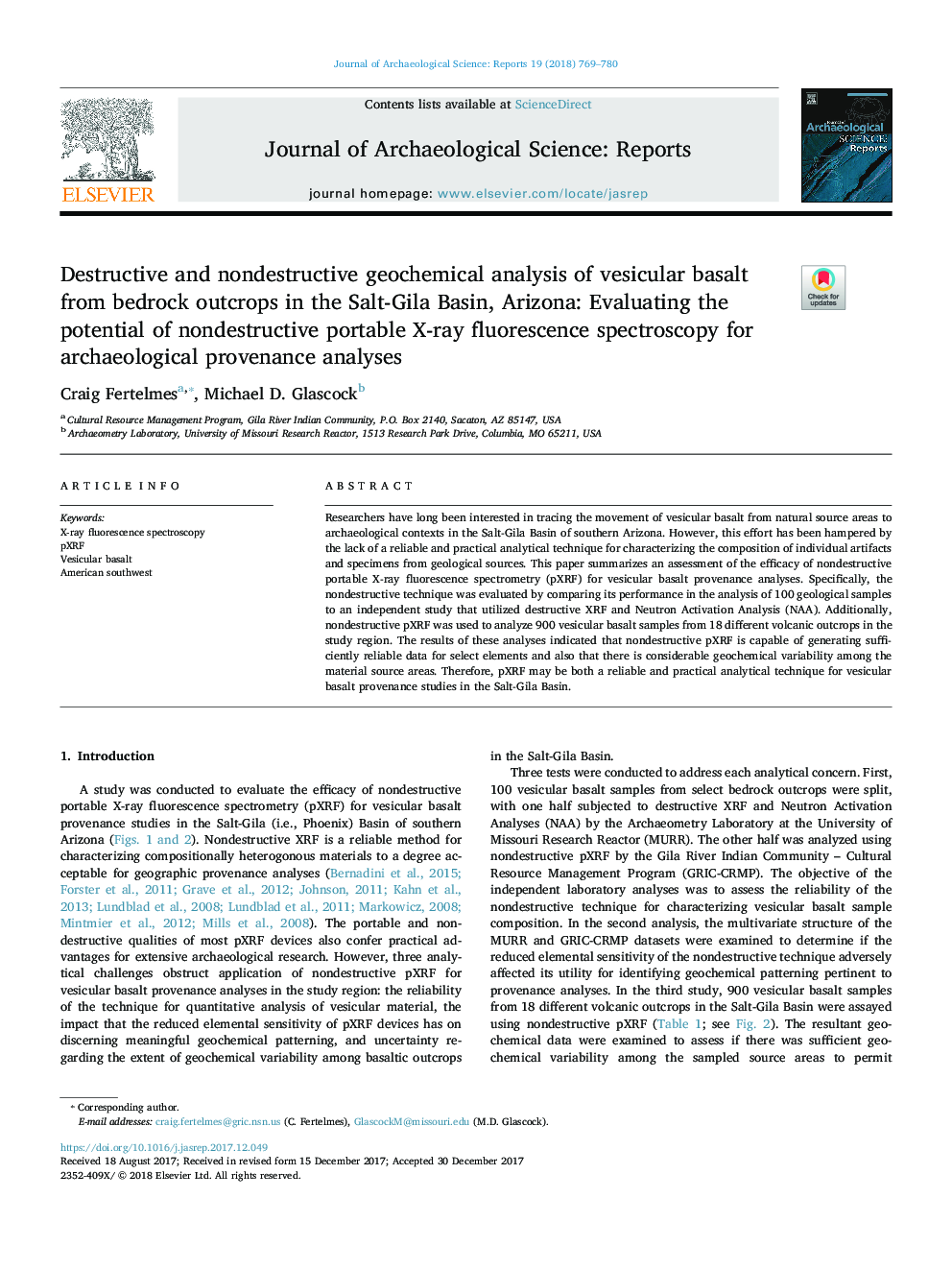| Article ID | Journal | Published Year | Pages | File Type |
|---|---|---|---|---|
| 7444996 | Journal of Archaeological Science: Reports | 2018 | 12 Pages |
Abstract
Researchers have long been interested in tracing the movement of vesicular basalt from natural source areas to archaeological contexts in the Salt-Gila Basin of southern Arizona. However, this effort has been hampered by the lack of a reliable and practical analytical technique for characterizing the composition of individual artifacts and specimens from geological sources. This paper summarizes an assessment of the efficacy of nondestructive portable X-ray fluorescence spectrometry (pXRF) for vesicular basalt provenance analyses. Specifically, the nondestructive technique was evaluated by comparing its performance in the analysis of 100 geological samples to an independent study that utilized destructive XRF and Neutron Activation Analysis (NAA). Additionally, nondestructive pXRF was used to analyze 900 vesicular basalt samples from 18 different volcanic outcrops in the study region. The results of these analyses indicated that nondestructive pXRF is capable of generating sufficiently reliable data for select elements and also that there is considerable geochemical variability among the material source areas. Therefore, pXRF may be both a reliable and practical analytical technique for vesicular basalt provenance studies in the Salt-Gila Basin.
Related Topics
Social Sciences and Humanities
Arts and Humanities
History
Authors
Craig Fertelmes, Michael D. Glascock,
